
Your company becomes who you hire—and what you tolerate.
Every hire is a bet on your future. Get it right, and your business gains momentum. Get it wrong, and you pay for it—financially, culturally, and emotionally. This chapter isn’t about filling seats. It’s about building a team that makes your business stronger simply by being part of it.
The best leaders hire with intention, delegate with clarity, and take full ownership of the people decisions they make. That means hiring slow, firing fast, and being brutally honest when something (or someone) isn’t working.
Are the people on your team making your business better—or just busier?
If you hesitate to answer, you’re in the right place.
Culture isn’t built in boardrooms. It’s shaped by who gets promoted, who gets protected, and who gets passed over. Processes matter—but people drive the mission. When you choose the right people and give them the right outcomes to own, you don’t just get things done. You build something that lasts.
No more excuses. No more passing the buck. Build a team you won’t regret.
Chapter 3, Hiring Without Regret, features these 4 fundamental Rules:
- WEEK 10— Rule No. 22: Hire slow, fire fast.
- WEEK 11— Rule No. 24: Own your mistakes.
- WEEK 12— Rule No. 31: Delegate outcomes, not tasks.
- WEEK 13— Rule No. 49: People over processes.
WEEK 10
Rule No. 22: Hire slow, fire fast.
Why: Bad hires destroy culture and speed.

Rule No. 22 SUMMARY ![]()
The strength of your team determines the strength of your business. Hiring slow means committing to a disciplined process—one that prioritizes fit, capability, and character over speed or convenience. It means refusing to lower the bar just to fill a seat. Firing fast means addressing misalignment or underperformance decisively before it corrodes culture, morale, or momentum. Tolerating the wrong hire too long is more costly than taking the time to hire the right one.
Right people, right roles, right now—or nothing.
Ask Yourself: Am I keeping someone on the team right now who I already know doesn’t belong here—and if so, what’s stopping me from making the call?
WEEK 10 Action Step: Before your next hire, create a one-page Hiring Scorecard that defines exactly what success looks like in the role—skills, cultural fit, and measurable outcomes. Share it with your leadership team and commit to not making an offer until a candidate meets the majority of those standards. This forces clarity and slows down impulse hiring.
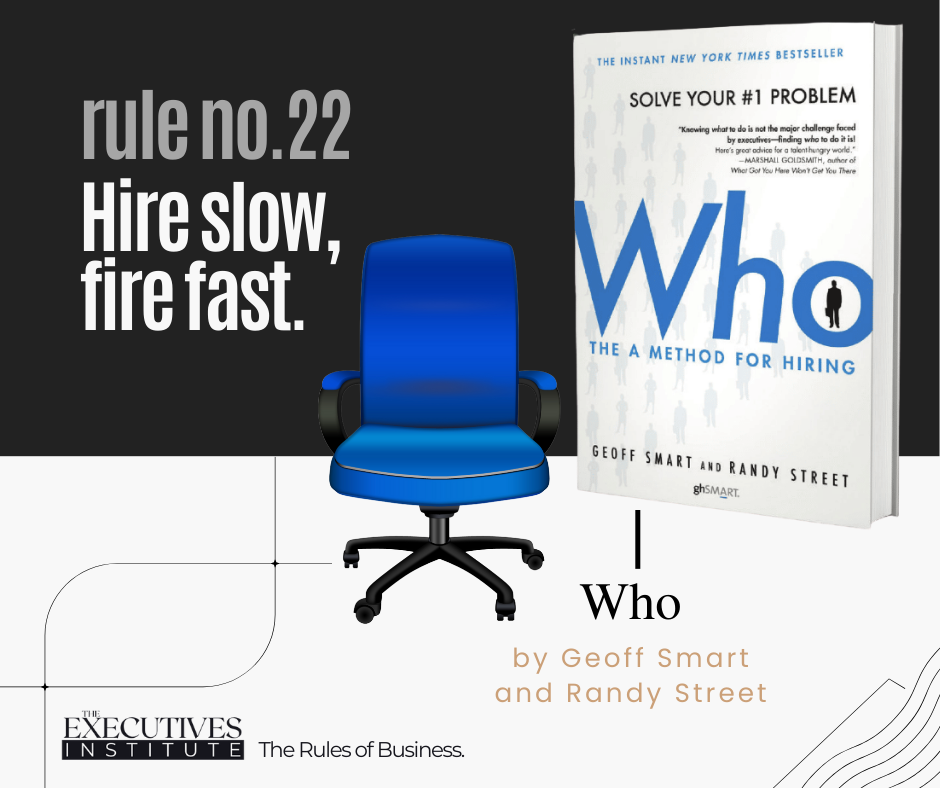
WEEK 10 RECOMMENDED READING: Who by Geoff Smart & Randy Street
“Nothing will accelerate your success more than getting the right team in place. And nothing will derail it faster than keeping the wrong people too long.”
— Geoff Smart, Who
WEEK 11
Rule No. 24: Own your mistakes.
Why: You set the tone for accountability.

Rule No. 24 SUMMARY ![]()
Great leaders don’t deflect blame — they absorb it, learn from it, and lead forward. Owning your mistakes isn’t weakness; it’s the foundation of credibility, respect, and real accountability. In any failure, you either make excuses or you make progress — never both.
Ask Yourself: If my team copied the way I handle mistakes, would we be stronger — or weaker — as an organization?
WEEK 11 Action Step: This week, identify one mistake from the past 30 days that you’ve downplayed, justified, or quietly ignored. Share it openly with your team or a trusted colleague. Explain what you learned and how you’ll prevent it in the future. The goal isn’t to dwell — it’s to model accountability and set the standard for ownership.
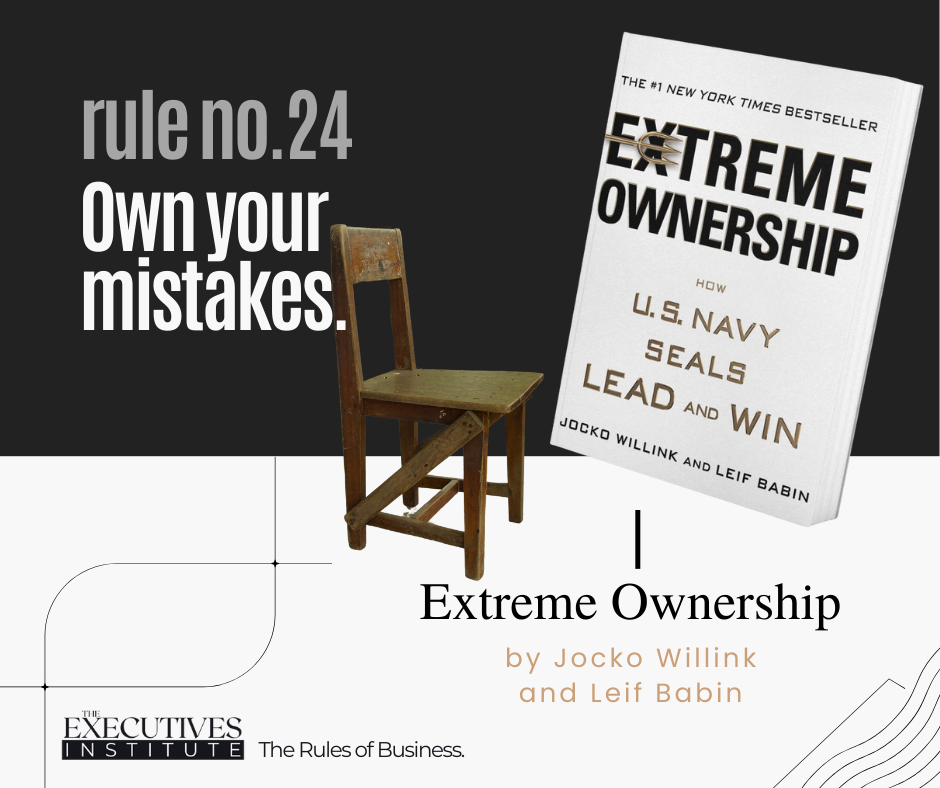
WEEK 11 RECOMMENDED READING: Extreme Ownership by Jocko Willink & Leif Babin
“The leader must own everything in his or her world. There is no one else to blame.”
— Jocko Willink, Extreme Ownership
WEEK 12
Rule No. 31: Delegate outcomes, not tasks.
Why: Empowered teams outperform micromanaged ones.
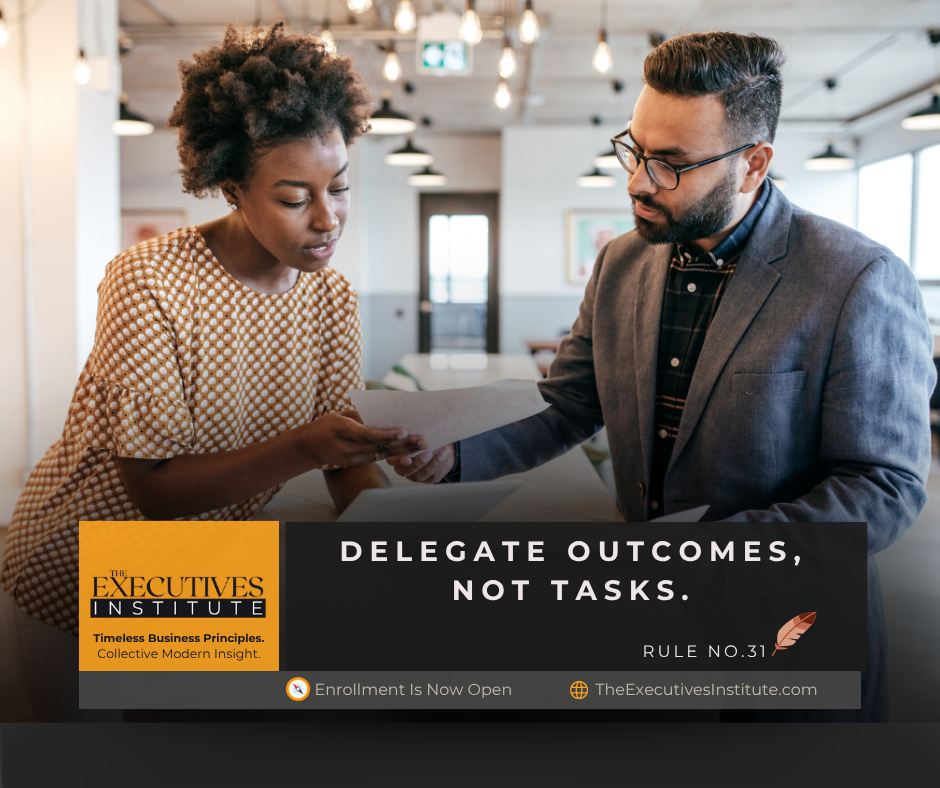
Rule No. 31 SUMMARY ![]()
Don’t just assign to-dos—transfer responsibility. When you delegate outcomes instead of tasks, you empower people to think, act, and lead with ownership. It’s the difference between creating followers and developing leaders.
Ask Yourself: Am I giving people responsibility for results, or just instructions for work?
If your team consistently comes back to you for the next step, chances are you’re still delegating tasks. If they come back with solutions, you’re delegating outcomes.
WEEK 12 Action Step: This week, pick one project or responsibility you normally delegate as a set of tasks. Instead, delegate only the desired outcome. Be explicit about what success looks like, the non-negotiables, and where they have freedom to decide. Then step back—resist the urge to dictate the how—and watch how your team handles the ownership.
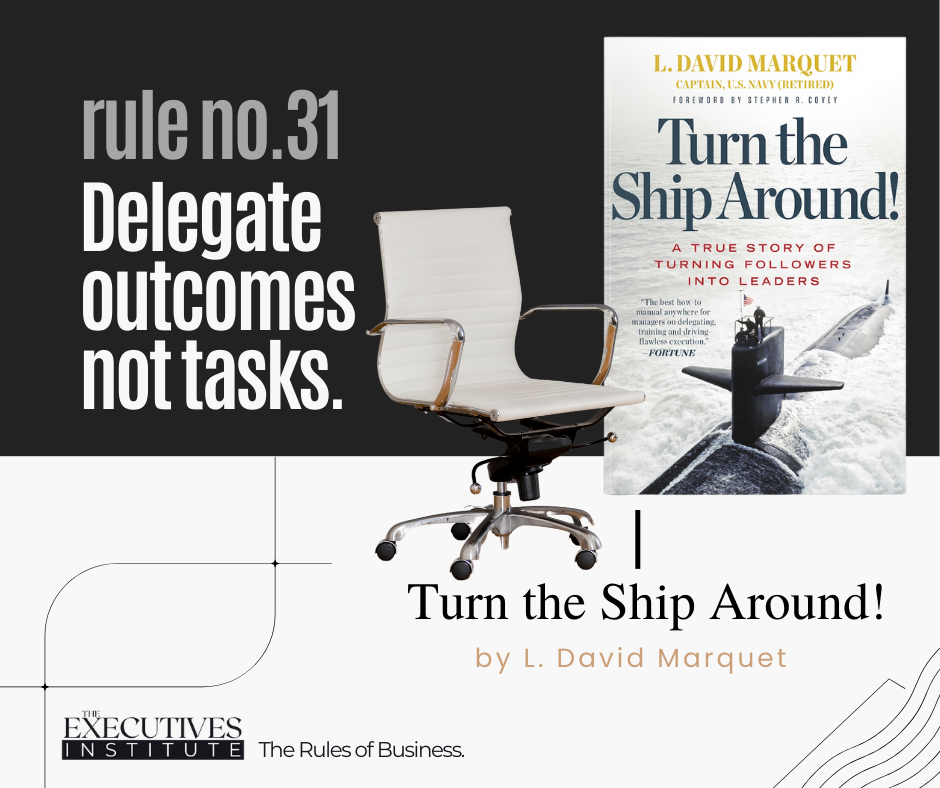
WEEK 12 RECOMMENDED READING: Turn the Ship Around! by L. David Marquet
“Don’t move information to authority. Move authority to the information.”
— L. David Marquet, Turn the Ship Around
WEEK 13
Rule No. 49: People over processes.
Why: Invest in your team’s trust and growth.

Rule No. 49 SUMMARY ![]()
Processes are important. But people drive results. Over-relying on systems, procedures, and checklists at the expense of human judgment, initiative, and ownership is a slow march to mediocrity. Organizations thrive when they trust and invest in people—not just when they refine processes. Processes should serve people, not control them.
Ask Yourself: If I truly trusted my people, what process would I no longer need?
WEEK 13 Action Step: This week, identify one process, policy, or system in your organization that frustrates your best people more than it helps them. Eliminate it, simplify it, or delegate authority so decisions can be made without it. Show your team that trust trumps bureaucracy.
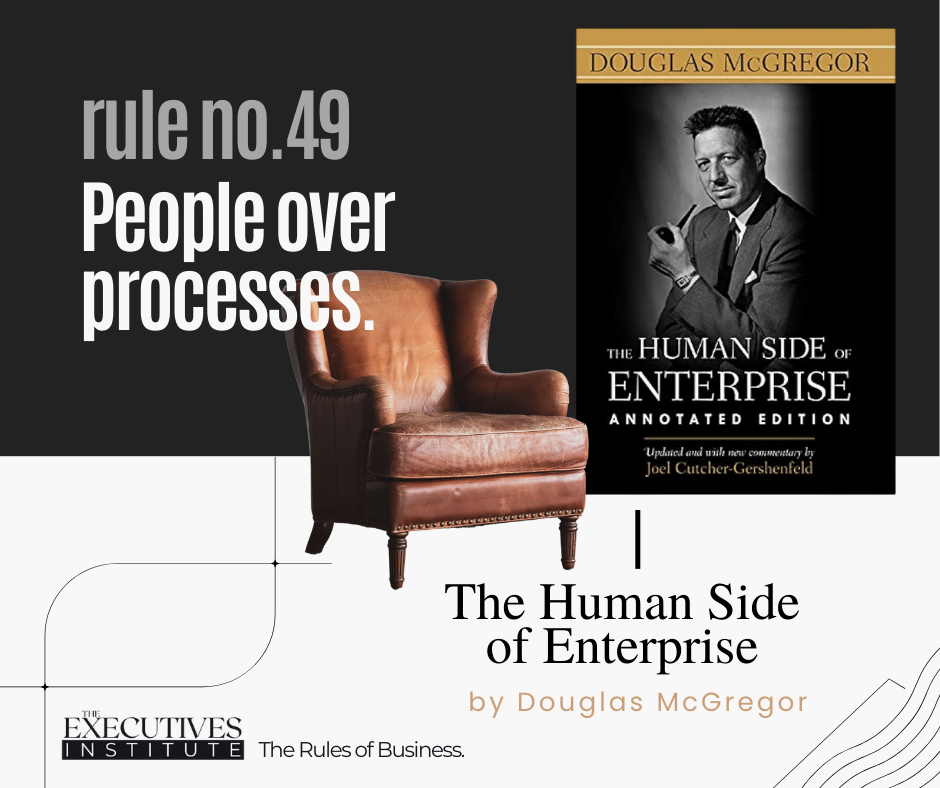
WEEK 13 RECOMMENDED READING: The Human Side of Enterprise by Douglas McGregor
“The ingenuity of people is far more reliable than the ingenuity of systems. Trust in people is not naïve—it’s essential.”
— Douglas McGregor, The Human Side of Enterprise
Congratulations —you’ve earned the team you lead!
If you’ve made it through this chapter, you’re not just managing people—you’re owning the weight of leadership. You’ve faced the hard truths: that every hire sends a message, that delegation is a trust test, and that culture is built by what you tolerate. The cost of avoiding people decisions is far greater than the discomfort of making them. You know that now.
You don’t need a perfect team. You need a committed one—with clarity, accountability, and a shared standard for what good looks like. That begins with you.
You’ve hired without regret. Now it’s time to lead without hesitation.
Up Next: Chapter 4: Strategy in the Real World
A strategy isn’t what’s written—it’s what gets repeated. In the next chapter, we’ll move past buzzwords and boardroom slides to uncover what strategy really looks like when the pressure’s on. You’ll get ruthless about focus, deliberate in your decisions, and clear on what truly drives results.
Ready to stop reacting and start leading with intent? Let’s go. VISIT CHAPTER 4
